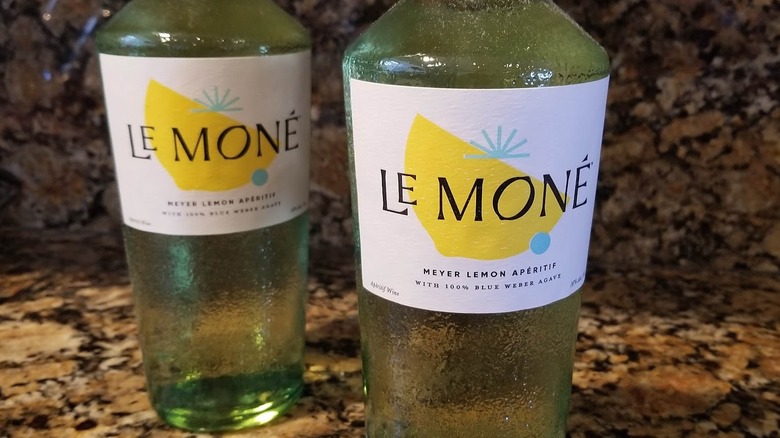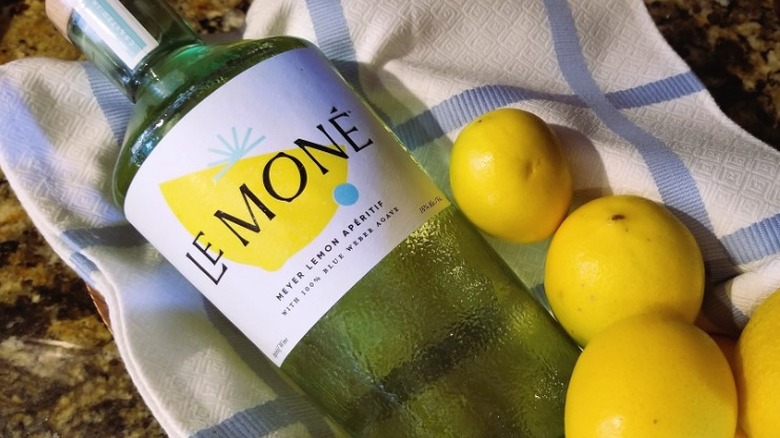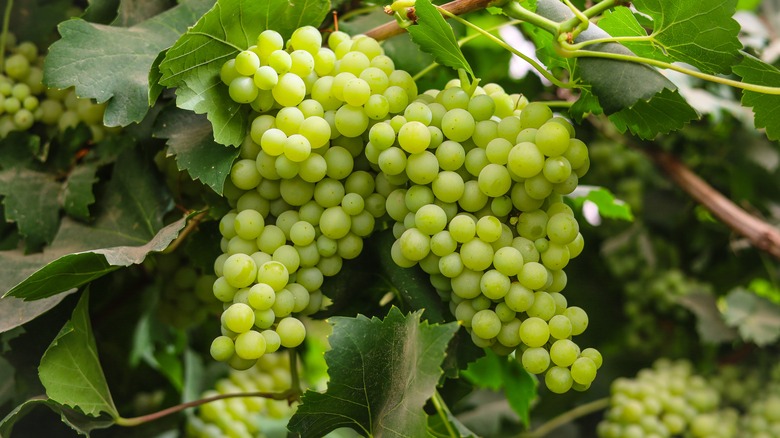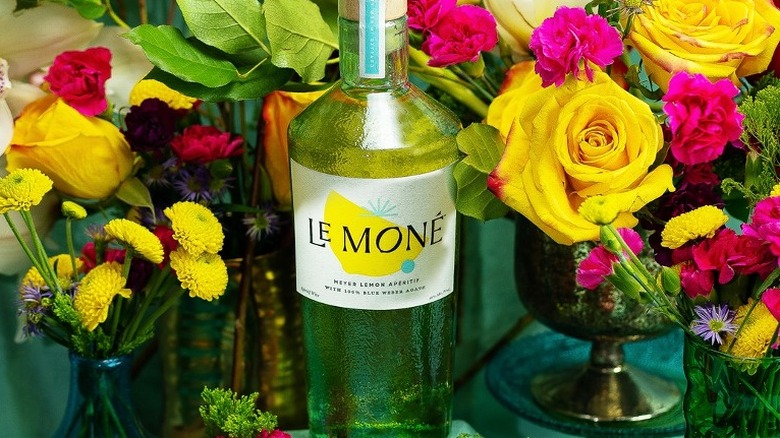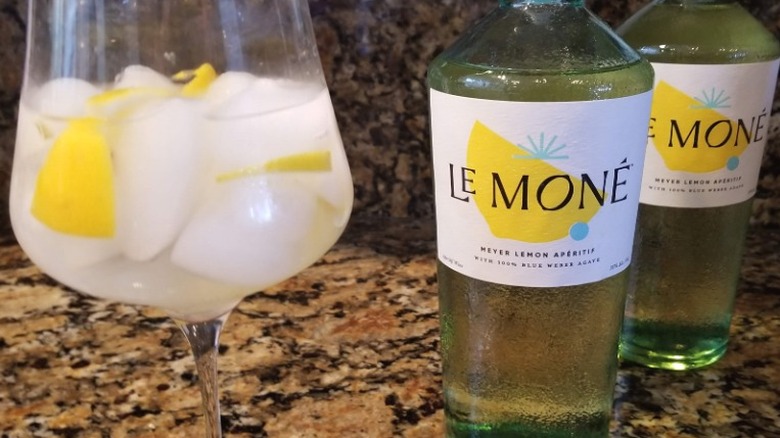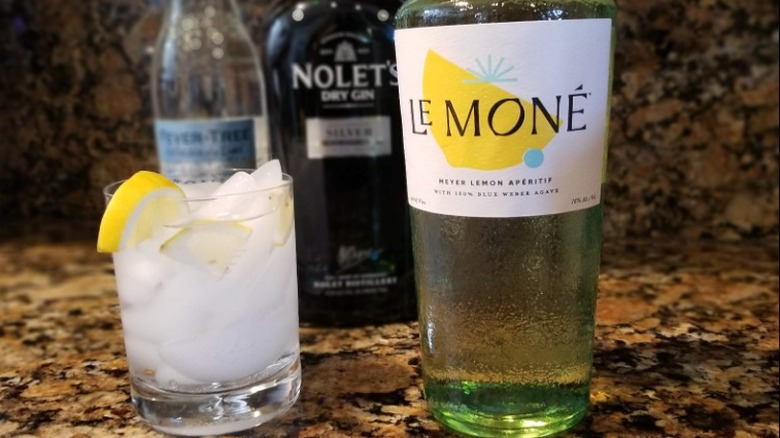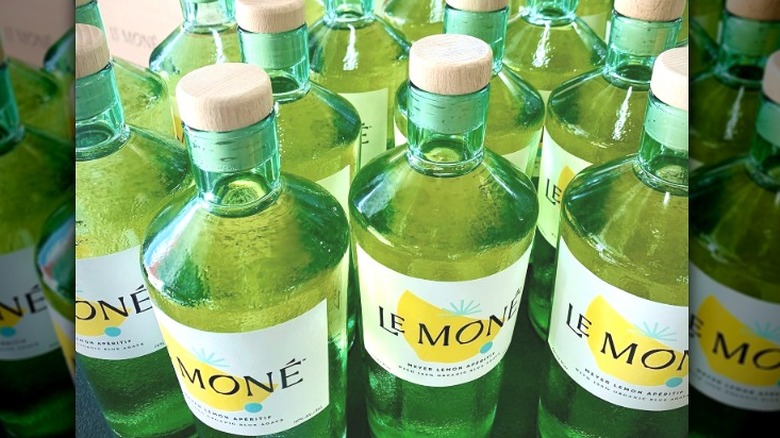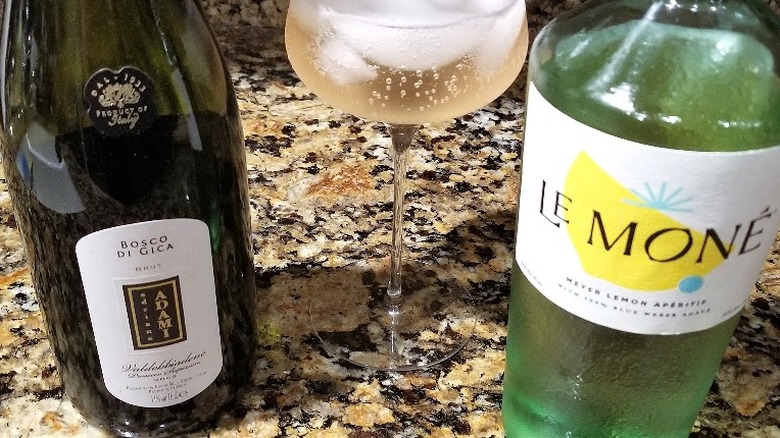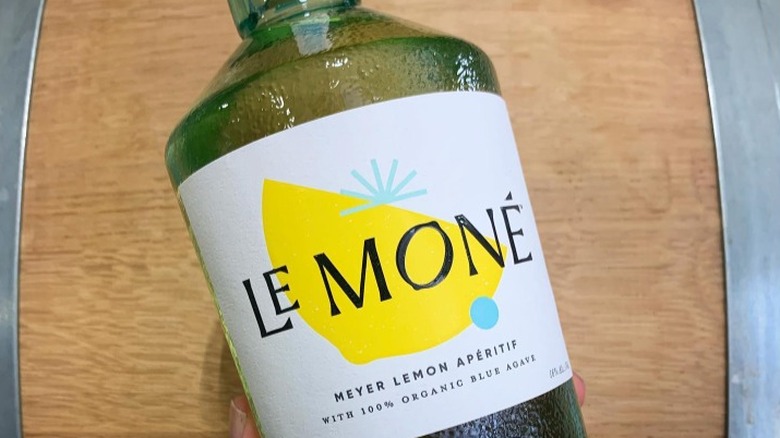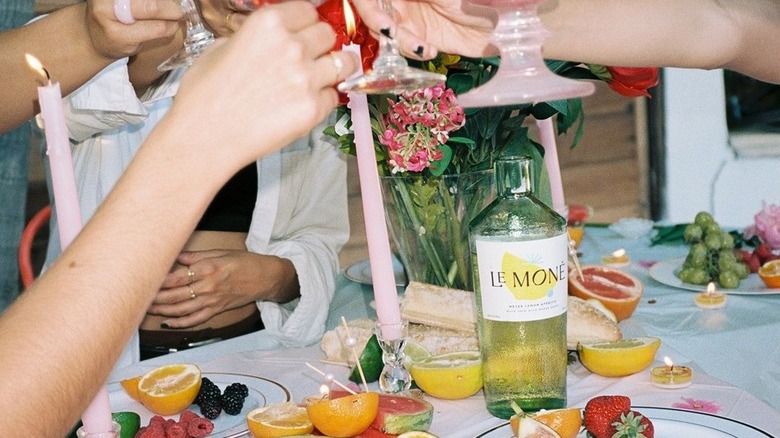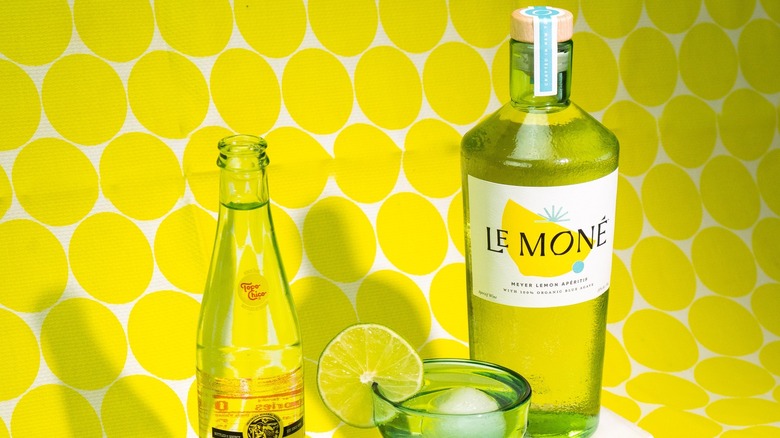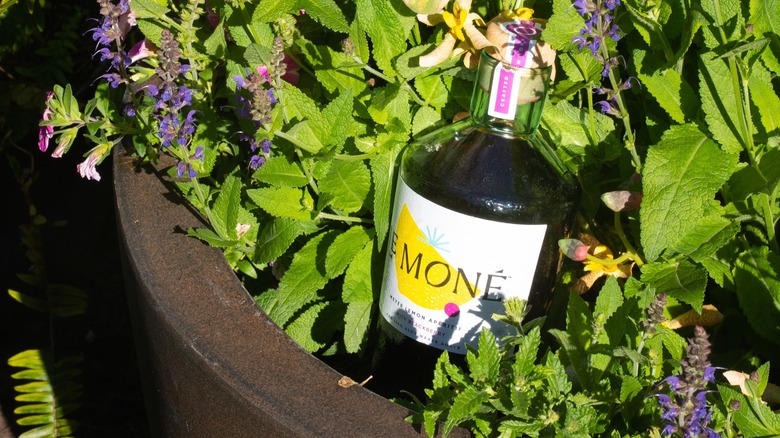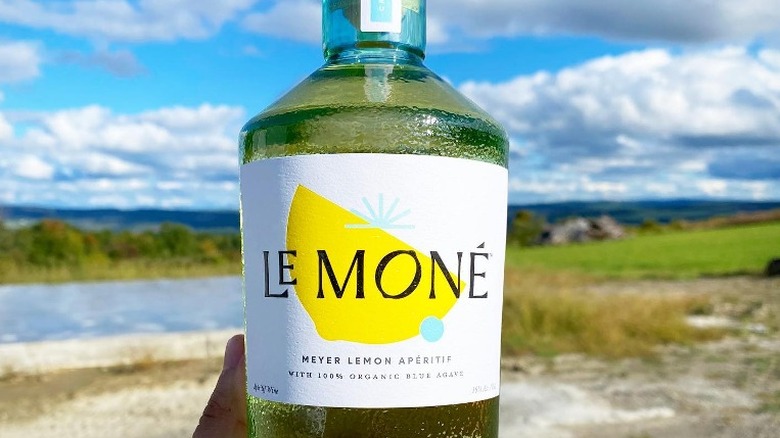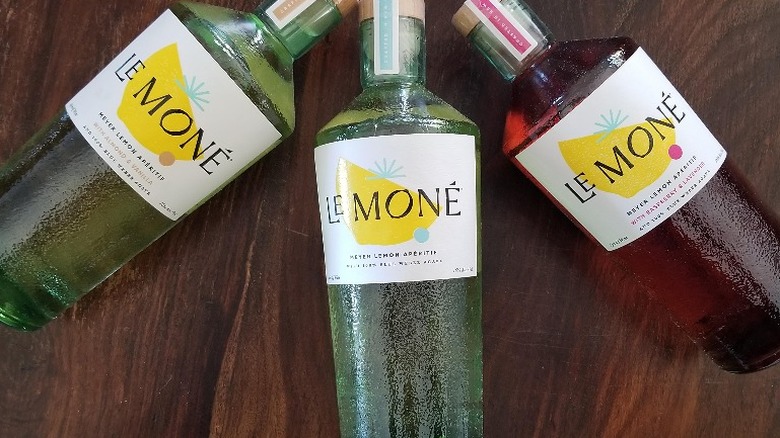Le Moné: The Ultimate Bottle Guide
We all love the end of a work day. It signals a time to relax and unwind while enjoying a glass of something sweet, tart, bitter, or fresh. In recent years across the country, the drink in that glass is often an apéritif.
An apéritif is an intentionally light, low alcohol, and refreshing liquor enjoyed early in the evening, awakening the senses and the taste buds for the night ahead. It has been enjoyed across Europe for decades, with enthusiasts toasting the evening with the best apéritif cocktails.
The International Wine and Spirits Record (IWSR), one of the most trusted research companies reporting on the beverage industry, shares the no/low alcohol market has a value reaching $10 billion in 10 key markets in 2021. The sector expects to continue its growth, outperforming full-alcohol products. Provi, the business-to-business beverage ordering platform, shares that alcohol drinkers have become "conscious consumers," noting that drinkers desire to enjoy beverages that work sustainably, have organic materials, and contain lower or zero alcohol.
Within New York's Hudson Valley, two beverage entrepreneurs have crafted Le Moné to answer the call of conscious consumers, delivering a refreshing citrus-infused liquor with low alcohol content, high quality, and a delicious taste. Debuting as a contemporary apéritif, the brand launched in 2022 and is already shaking up the industry. Here is everything you need to know about Le Moné.
Childhood picnics inspired Le Moné's creation
Le Moné debuted in 2022 after months of research, taste testing, and development from bioengineer turned master beer brewer turned spirits distiller Eric Bachli, and marketing professional and spirits entrepreneur Max Nevins. Hudson Valley Magazine shares that Bachli was drawn to brewing initially because of the scientific similarities between creating alcohol and his research products, but the results came much faster with beer. Bachli turned his home brewing hobby into a full-time career, returning to school and working in every aspect of the industry in the northeast prior to his arrival at Sixpoint Brewery in New York. At Sixpoint, Bachli took the reigns as the master brewer, crafting over 70 unique small-batch beers.
We had a chance to speak with the co-founders regarding the product and their inspiration. Nevins told us that he and Bachli worked together at the Sixpoint Brewery. After departing, they came together to create something new in the emerging low-alcohol, apéritif category. Nevins shared, "The apéritif category allowed us to work in a wholly new innovative space with few boundaries, sitting between the wine and spirits industry."
The duo agreed they did not want to produce a heavy, bitter apéritif. Nevins adds, "We wanted to create an apéritif that was a bit more approachable, lower in bitterness, balanced acidity, and less sweet." With a mutual love for citrus, their liquor emerged as a refreshing liquor reminiscent of lemonade enjoyed at picnics as a child.
Le Moné is an apéritif wine
The New York hybrid grape variety, traminette, is the base for Le Moné. Traminette is a hybrid variety crossing highly perfumed Gewurztraminer and the hybrid Joannes Seyve 23.416. The fruit was initially for table grape production. However, due to the quality and flavor, it quickly became a wine-producing variety for both dry and off-dry styles. Traminette is resistant to disease, does well in cold climates, and efficiently produces high yields.
Le Moné CEO and co-Founder Max Nevins shared that he and Balchi tasted dozens of different varieties from New York and throughout the world, finding the bright, fragrant, citrusy intensity of the traminette fitting the profile they were looking for as the vibrant base for Le Moné.
Nevins adds that after Balchi departed Sixpoint Brewery, he and his wife built a small farm in the Hudson Valley, maintaining regional relationships he had made at the brewery. One of these relationships was with family-owned Point of the Bluff Vineyards in the Finger Lakes region of New York. When the duo was looking for the wine grape that would become the base of Le Moné, they tasted the varieties grown by Point of Bluff, deciding its traminette to be the best selection for the apéritif.
In addition to the traminette, Le Moné includes brandy fortifying the wine, and an infusion of citrus and botanicals, creating an apéritif wine. Nevins notes, "The result was something totally unique."
It tastes like sunshine
After the fruit from New York has been harvested and fermented to around 11% ABV, brandy from California fortifies the wine to approximately 16% total alcohol by volume (ABV), similar to the alcohol level of a fino sherry, port, vermouth, or other fortified wines.
It is also similar to vermouth due to the addition of an infusion of fruit and botanicals, added after fortification, like an aromatized wine. Le Moné uses Meyer lemon peels, Italian bergamot, and Persian lime.
Max Nevins adds Meyer lemon juice is added in addition to the peels to give a bright, zesty tartness to the apéritif. The Meyer lemon also brings a natural flowery note, which melds nicely with the final addition in Le Moné, 100% organic blue weber agave juice from Mexico. The agave adds a floral note while lightly sweetening the apéritif. Trying the product chilled and served neat, an immediate wave of tart citrus wash over the palate, delivering tangy lemon-lime and fresh orchard fruit, like tart green apple and Asian pear.
Though the overall liquor is light in body, it is bountiful in taste, with the sweet and sour tartness of the citrus differentiating it from other apéritifs. In addition to the fruity top notes, perfumed floral characteristics linger throughout, melding with soft herbs. When adding a few ice cubes, subtle aromas of fresh rose, white flower, lemon blossom, and green lime leaf rise to the forefront.
Le Moné keeps the sugar and alcohol levels low
Creating a product in the low alcohol category was one of the drivers of Le Moné's inception. Max Nevins told us he was interested in the growing trend towards low-alcohol spirits, which creating the wine-based apéritif allowed. Nevins says, "We were getting sick of drinking huge, heavy high calorie IPAs, and were gravitating to liqueurs, vermouths, and apéritifs. While we do enjoy bitter, we wanted something a bit more casual, less sweet, and more approachable."
Fortifying the dry white wine to 16% ABV, Le Moné has lower alcohol than traditional liquor, with an average of 40% ABV, (via Alcohol.org). After fortification, Le Moné uses natural organic blue weber agave to sweeten the spirit to balance the tart, zesty flavors. Using agave instead of refined table sugar gives the impression of sweetness without the need to use as much. WebMD reports that one tablespoon of agave syrup has 60 calories, compared to 40 for a tablespoon of sugar. However, agave syrup tastes one and a half times sweeter than refined sugar, meaning less is required to achieve the desired flavor.
It is delicious on its own or in cocktails
Le Moné is fresh and balanced enough to enjoy on its own over ice with a splash of bubbles while also being sufficiently flavorful to replace full-proof liquors in your favorite drinks and apéritif cocktails.
Ensuring the apéritif could be enjoyed in multiple ways was a defining factor in the creation of Le Moné. When speaking with Max Nevins, he shared, "Le Moné sweet enough that you can mix it, and not too sweet that you can't drink it on its own." He says it can be swapped for full-proof counterparts into lower alcohol cocktail variations without compromising on flavor, ensuring you can sip a cocktail all night and still make it to the gym before work in the morning. Beyond the apéritif at the start of an evening, he suggests pairing the liquor with seafood and shellfish.
We love it instead of gin for an extra lemony French 75 cocktail or added with gin in a classic gin and tonic. Or try adding it to our shallot mignonette recipe for oysters bringing a sweet lemony pop to the savory oniony flavor.
Le Moné vs. Limoncello
There are similarities between Le Moné and the famous Italian liqueur limoncello. Both are lemon-flavored alcohol made with an infusion of lemon peels. The alcohol level of limoncello is also considerably higher than Le Moné, around 60 proof, as steeping lemon peels in grain alcohol produces the liqueur, traditionally crafted in Italy, with origins in either Capri or Sorrento, according to A Couple Cooks.
The classic limoncello recipe also includes significantly more sugar than Le Moné, around 2½ cups per 750-milliliter bottle. Conversely, Le Moné is light, non-syrupy, with a lovely balance and only 2 grams of sugar per ounce.
We asked Max Nevins if he hears comparisons between his product and limoncello. He told us sometimes consumers ask if it is similar. Then they taste Le Moné and quickly realize how unique and different it is. Where limoncello is very sour and highly sweet, with a thick consistency and texture, Nevins says, "Le Moné is bright, crisp, and tart with some body, but not a ton of viscosity, and no syrupy sweetness."
Le Moné vs. Aperol
The concept of an apéritif is to open and excite the palate. With Le Moné, each ingredient is in harmony with the others, with the differentiating factor of the liquor and various apéritif counterparts being its tartness. Unlike Italian options, like Aperol and Campari, which have a bitter, herbaceous base, Le Moné is light, fresh, and tart.
Le Moné's flavor shows the sourness of the citrus rather than bitterness. Still, it generates a similar response igniting the salivary glands and signaling the arousal of the appetite. Max Nevins adds, "We use (lemon) juice to balance the acidity, with that tartness being a big differentiating factor from other apéritifs/liqueurs."
When mixed into the classic Aperol spritz or the modern Le Moné cocktail with sparkling wine and seltzer, each apéritif has balance, is refreshing, and is delicious. However, a single serving of Aperol has over 10 grams of sugar while Each ounce of Le Moné has 2 grams of sugar.
Is it priced right?
Le Moné is available throughout New York, Massachusetts, Rhode Island, and Pennsylvania, with an average retail price of $35 a bottle. The company's website is the easiest way to purchase the apéritif if you don't live on the East Coast. Co-founder Max Nevins, told us bottles of Le Moné are currently shipping to 33 states across the country, with distribution continuing to grow. If ordering online, the company gifts complimentary shipping if purchasing two bottles of the product. Le Moné currently offers a "refer a friend" opportunity to incentivize you to share the Le Moné love with loved ones.
Affordability-wise, the standard 750-milliliter bottle of Le Moné contains 10 2.5-ounce servings, making each serving of the artisanal product $3.50. The average bottles of Campari and Aperol are slightly less than Le Moné, however, both are produced on a much larger scale than the lemony apéritif. Nevins says last year the company sent around 10,000 bottles across the country to consumers with hopes the distribution numbers continue to grow.
Le Moné is a balance of science and art
If you are like us in the belief that the foods and flavors a chef creates are an art form or the art of wine is more than just grapes in a bottle, you will agree that an artisanal spirit is a work of art. In speaking with Chief Innovation Officer and co-founder Eric Bachli, his belief concurs with this, noting, "Each bottle is an expression of our passion as libation creators."
When we asked him how his scientific background and research experience helped in the creation of Le Moné, he shared, "In my mind, it's part art and part science. The art manifests in the vision of what we want to create and what we want the consumer to feel. But there is a scientific component that influences it all — blending ingredients and adding different components requires science to find the right balance. The art is the grand vision of what we set out to create, and the scientific approach provides us the tools to get there."
Le Moné and tequila have a lot in common
Blue weber agave is the sweetener to balance the tartness of the fruit in Le Moné, the same base ingredient of tequila. Though Le Moné contains zero tequila, both liquors have aromatic, earthy notes of wildflower, creamy honey, and soft herbs that agave lends to spirits.
Using Le Moné instead of tequila in classic cocktails provides a lower alcohol and lower sugar option in drinks that traditionally feature the liquor, like our zesty Paloma cocktail. We recommend swapping the tequila and agave for a few ounces of Le Moné, making a lower-calorie and lower-alcohol libation perfect sipped from brunch to sunset. And we love it as the base in a spiced ranch water cocktail.
In our survey to distinguish the most popular cocktail in America, a whopping 55% of people prefer a margarita over any other cocktail. As tequila and Le Moné have so much in common ingredients-wise, we suggest mixing one part tequila with two parts Le Moné instead of triple sec and agave to create a perfectly balanced margarita. Add a squeeze of lime and serve chilled over ice.
The bottle works with a focus on sustainability
According to Provi, one of the main factors conscious consumers look for in the wine and spirits they enjoy today is the sustainability of the products. We asked Max Nevins about the importance of sustainability and if it is a focus for Le Moné. He shared that Le Moné focuses on working smart where they can. However, certifications noting sustainability are financially prohibitive for the small company.
Le Moné supports local products as the wine base is from a "farm winery," or a winery that holds a special designation in New York from the Farm Winery Act of 1976. Visit Finger Lakes reports the act supports local producers, as the title is only allowed for products made with 100% New York-grown wine.
Nevins told us that though they are currently working with a brandy producer in California, they may add a brandy producer in New York. The hope for the future is also to grow the lemons and other citrus used to infuse the product, as Bachli's wife comes from a family of citrus farmers.
Additionally, Nevins adds the recycled glass forms the cocktail shaker-like glass bottle packaging. Produced in Alto Adige, Italy, the bottle's design is aesthetically pleasing, with the bottle's texture like a lemon peel, and created sustainably consciously.
It is vegan
Each element of Le Moné is intentionally vegan. Avoiding animal products in the apéritif's production was a personal, ethical decision for Eric Bachli. Bachli told us that he and his wife have lived eating a plant-based diet for much of the past 10 years due to his passion for animal advocacy. He and his wife built an animal rescue farm in Hudson Valley where, today, goats, donkeys, and chickens accompany the Balchis and their two Swiss mountain dogs.
He says, "It's always been very important to me to extend my ethics, as it pertains to food and animal advocacy, across all aspects of my life. We are huge animal lovers, and a central tenet in our lives is compassion for all the other creatures we inhabit the earth with — for compassion, environmental, global, and personal health reasons." Bachli shares this central tenet became the foundation for how he selected ingredients and vetted vendors, ensuring only 100% plant-based ingredients.
These ingredients include using wine that has been fined and filtered in a vegan manner. Though wine comes from grapes, and grapes don't contain animal products, PETA shares that winemakers' tools for filtration and fining the wine often include gelatin, egg whites, or milk proteins. Le Moné avoids using such ingredients, opting for one of the many vegan alternatives like carbon, limestone, or plant casein. Agave syrup is also naturally vegan, making it the ideal sweetener for the product.
Fresh new flavors are now available
With Meyer lemon being the original core Le Moné brand flavor, Max Nevins and Eric Bachli recently released new flavor options, including an infusion of lemon blackberry, raspberry with lavender, and almond and vanilla into the Le Moné Meyer lemon apéritif base.
We asked Bachli how he looks at product creation and how he sees various combinations coming together. Bachli told us, "When I create new beverages, I'm focused on the impact the liquid has on the senses, with the interplay of contributing ingredients that influence the aromatics, flavor, mouthfeel, texture, perceived sweetness, salinity, and acidity." Adding additional natural flavors opens opportunities for enjoyment.
We tried the pink-hued, fruity, and floral Le Moné lemon, raspberry, and lavender with Prosecco for a floral, fruity brunch cocktail. We created one of the best scotch whisky cocktails by mixing Le Moné almond and vanilla with nutty, caramel-rich Macallan scotch for lower alcohol, an equally as delicious take on a Godfather Cocktail, using one-part scotch and two-parts Le Moné instead of the classic combination using amaretto.
